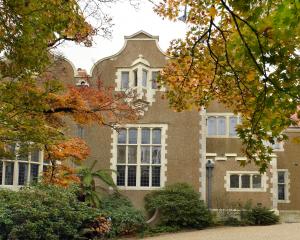
The Dunedin City Council has purchased 35 kauri and begun planting them in small groves in selected locations around the city, in an effort to help safeguard the species from the disease.
So far, 23 kauri have been planted at Walton Park and Signal Hill, while another 12 will be planted at Truby King Reserve in the coming weeks.
Council parks and recreation group manager Robert West said the aim was to help secure the trees’ long-term survival, as the spread of kauri dieback led to kauri being classified as a threatened species earlier this year.
The initiative was welcomed yesterday by Associate Prof Janice Lord, a plant evolutionary biologist at the University of Otago, who told the Otago Daily Times it was a "great idea".
There were already small kauri tree groves and individual trees established in Dunedin’s Town Belt, as well as individual trees in the Botanic Garden, private gardens and as far south as Stewart Island.
Kauri "tend to do OK here", although the colder temperatures limited their size and ability to seed, she said.
A more resilient population of kauri in Dunedin could provide a "lifeboat" for the species, as the colder temperatures would fight the spread of kauri dieback from the warmer parts of the North Island, she said.
"Being the type of disease it is, it does best in warm, humid environments. Somewhere like Dunedin — it’s cooler, it’s drier, we have half the rainfall of Auckland — there are some environmental barriers to it actually spreading down here.
"And also, if the trees are planted away from where people will be walking around them, then you’re less likely to actually get it occurring."
Programmes established to protect endangered birds showed what could be achieved, she believed.
In time, kauri trees from Dunedin could even be used to reintroduce an uncontaminated population to the North Island, should the worst happen, she said.
"We’re in a position of doing desperate things to save special species, so I think moving kauri in an endeavour to save at least some genetic diversity, if the worst comes to the worst up north, I think is a great idea.
"We can be a lifeboat for the genetic diversity of the species."
Dunedin Amenities Society president Paul Pope said three kauri groves planted in Dunedin’s Town Belt in 1990 — to mark the city’s 150th celebrations — were already "very, very successful" and showed what could be achieved.
The trees were now up to 5m tall, and although they would not reach the heights seen in Northland forests, "they will do OK", he said.
Comments
The Kauri is unique, one of the world's great trees. When logging began in NZ the biggest kauris rivalled the greatest Calfornia redwoods in timber production.
To be certain, the entitled will not stop stomping around the Waitakeres, a cohort who
'won't be told what to do by Maori'.












